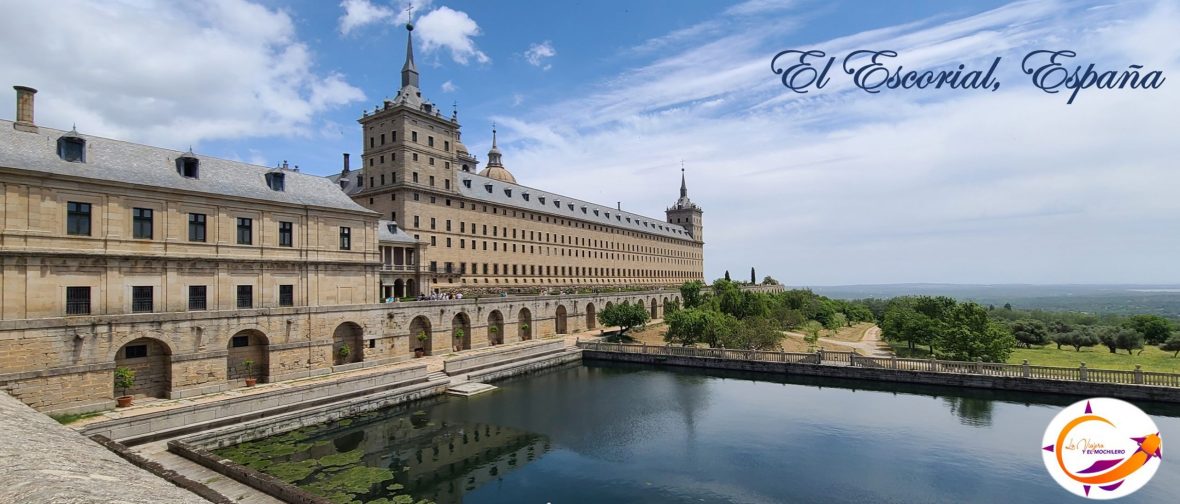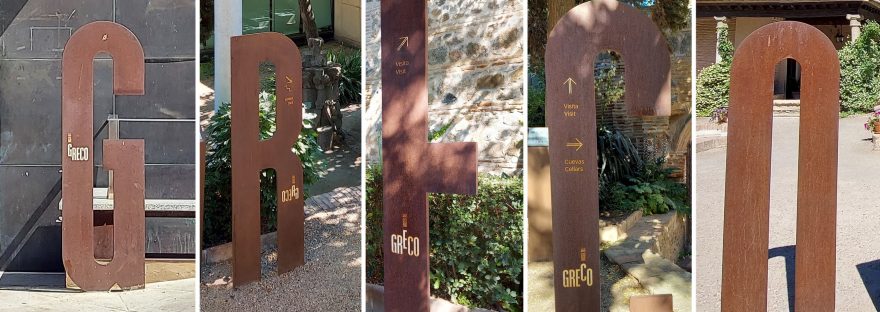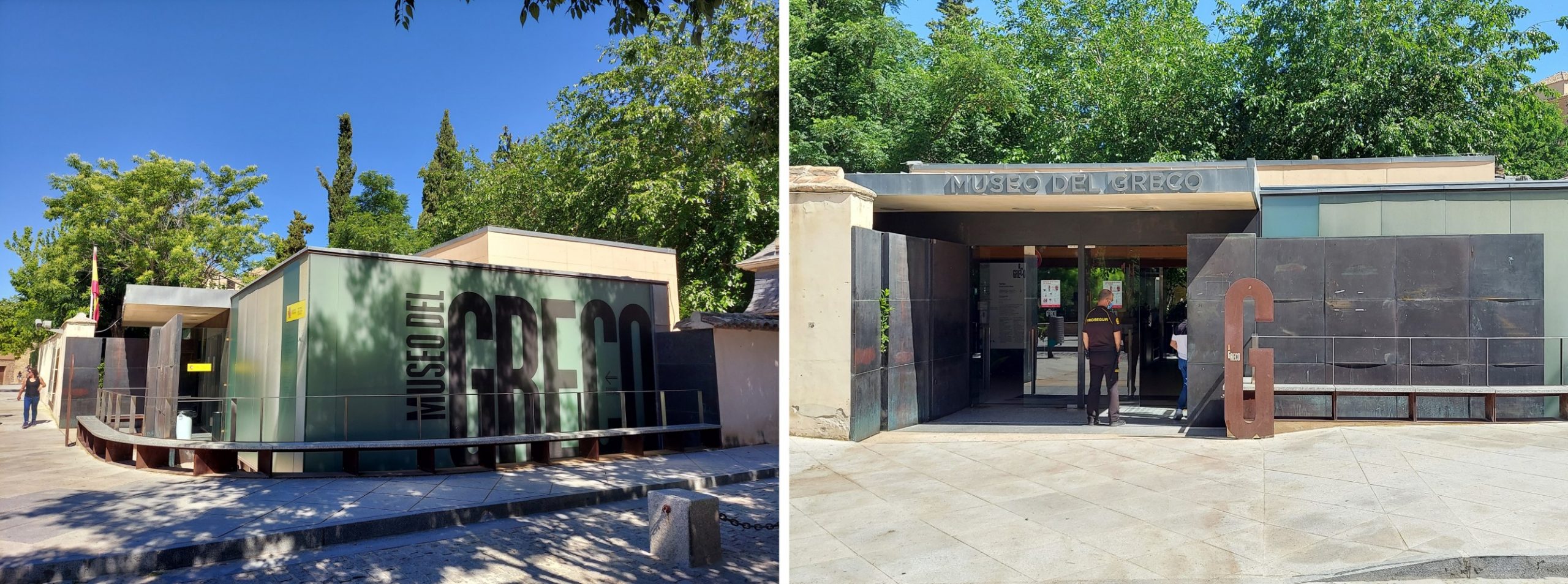
Looking at the building that houses this museum, it is difficult to relate the modern architecture of the structure that welcomes us, with the work of the painter Domenikos Theotokopoulos, born in Crete in 1541 and known to us as “El Greco”. Although he was not Spanish, most of his pictorial work was done in Toledo, Spain. He died in 1614, at the age of 72, in said city.
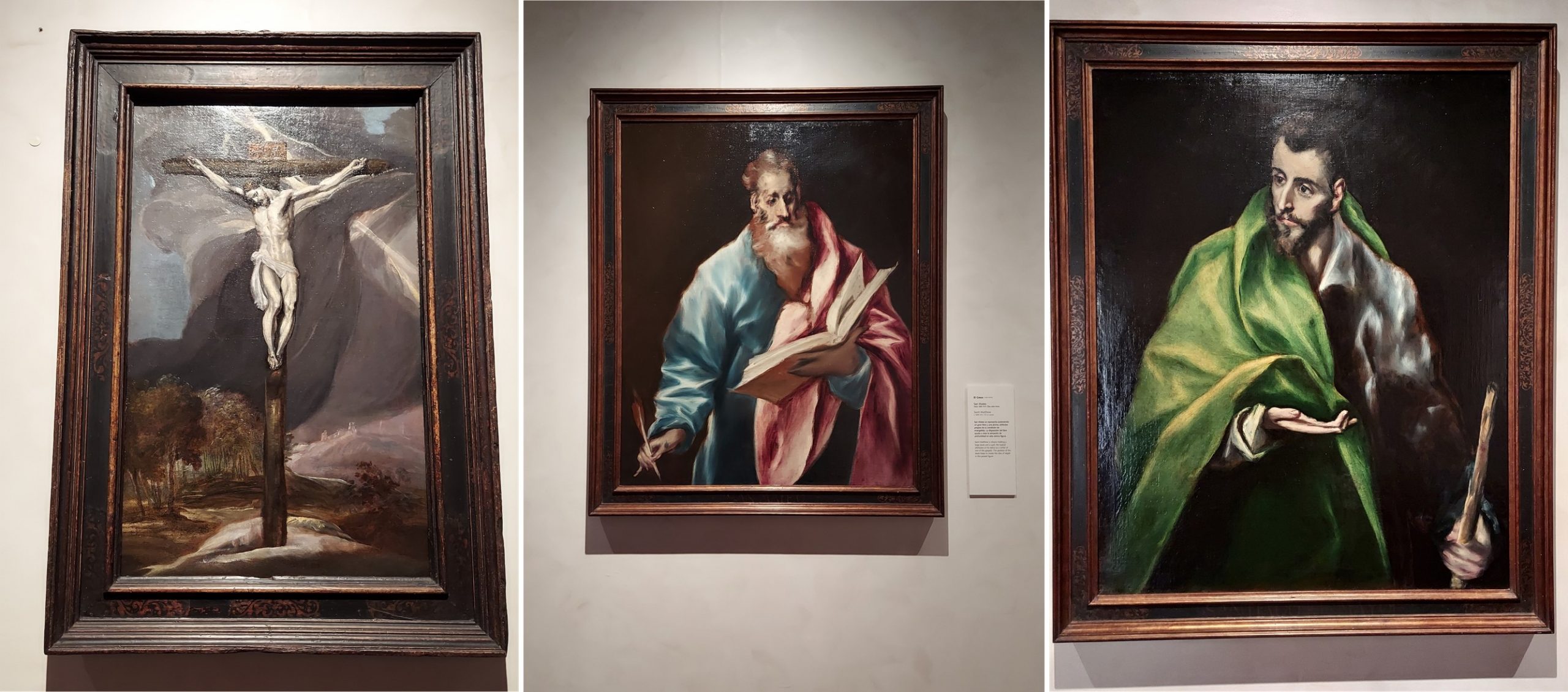
The Greco Museum was inaugurated in 1911 to gather the works of the Cretan artist, being the only one in Spain dedicated to this painter. The purpose of this institution is to transmit the artistic importance of the figure of El Greco, as well as the influence of his work and personality on the Toledo of the early seventeenth century. The three paintings by El Greco shown from left to right are: Crucifixion, ca. 1575-1577; Saint Matthew and Saint James the Greater (Zebedee), both dated ca. 1608-1614.
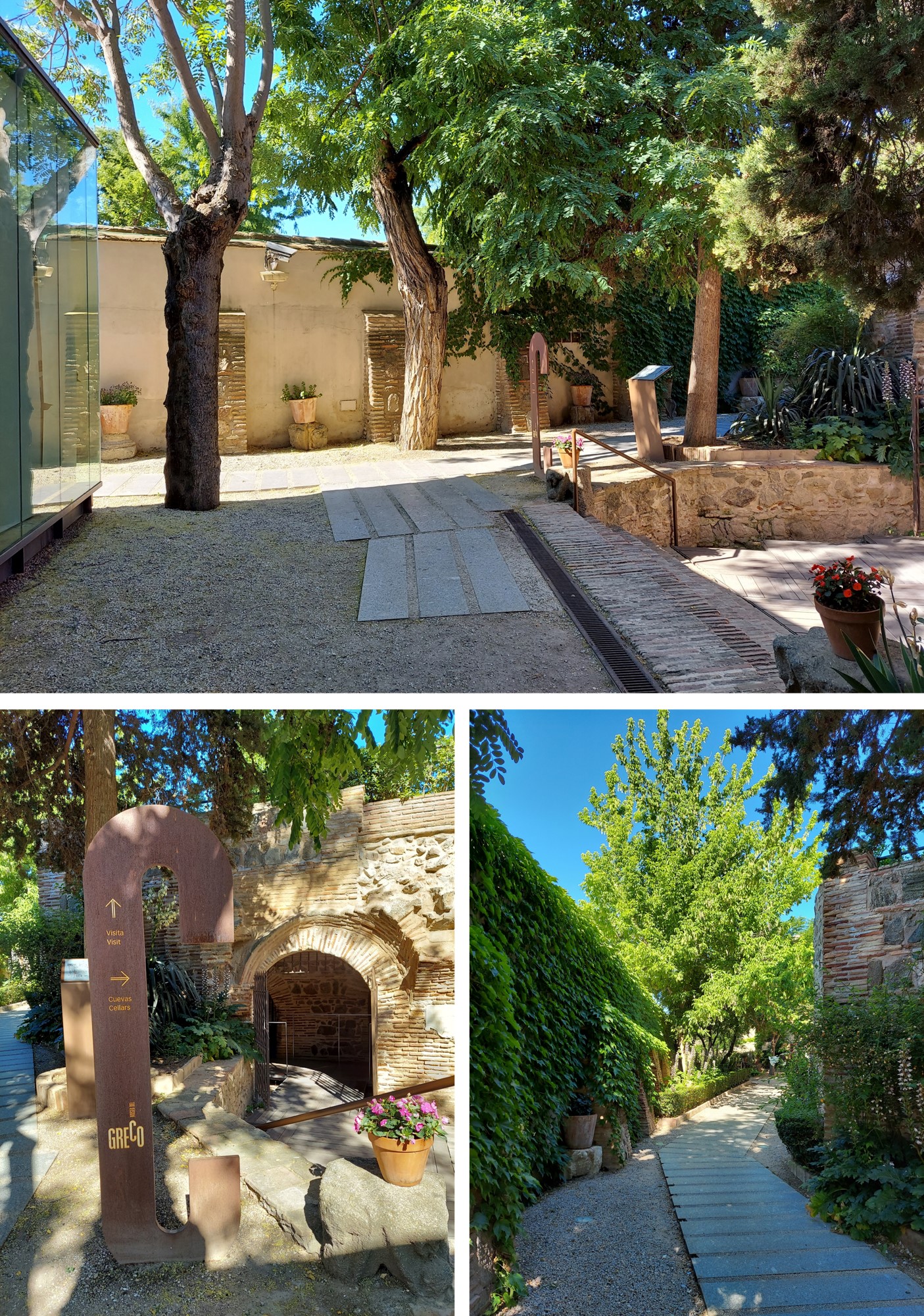
At the beginning of the 20th century, when a revaluation of El Greco’s work began, the Marquis de la Vega Inclán bought a ruined 14th century house in the Jewish quarter of Toledo, mistakenly believing it to be what remained of the painter’s house. Our tour begins by visiting some caves, which are part of the site acquired by the Marquis de la Vega Inclán to complete his project for the construction of the “Casa del Greco”, the creation of a museum and a garden.
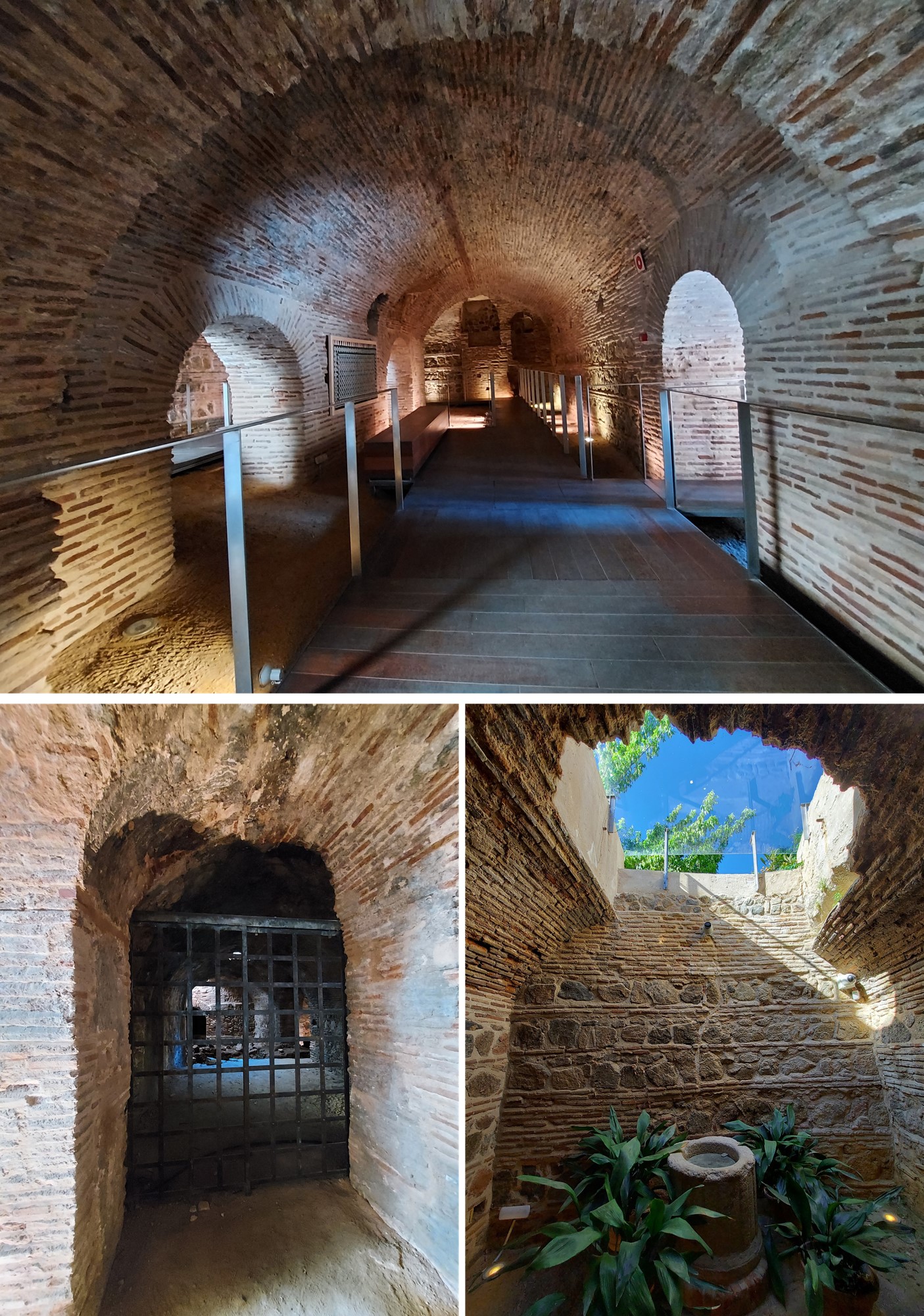
From a historical point of view, these remains are the only ones preserved of the palace that Samuel Levi, treasurer of King Peter I, built during the mid-14th century in the Jewish quarter. The vaulted galleries distributed over two floors constituted the basement and semi-basement of the palace. Here were installed a series of storerooms and an important ritual bath with its corresponding cisterns.
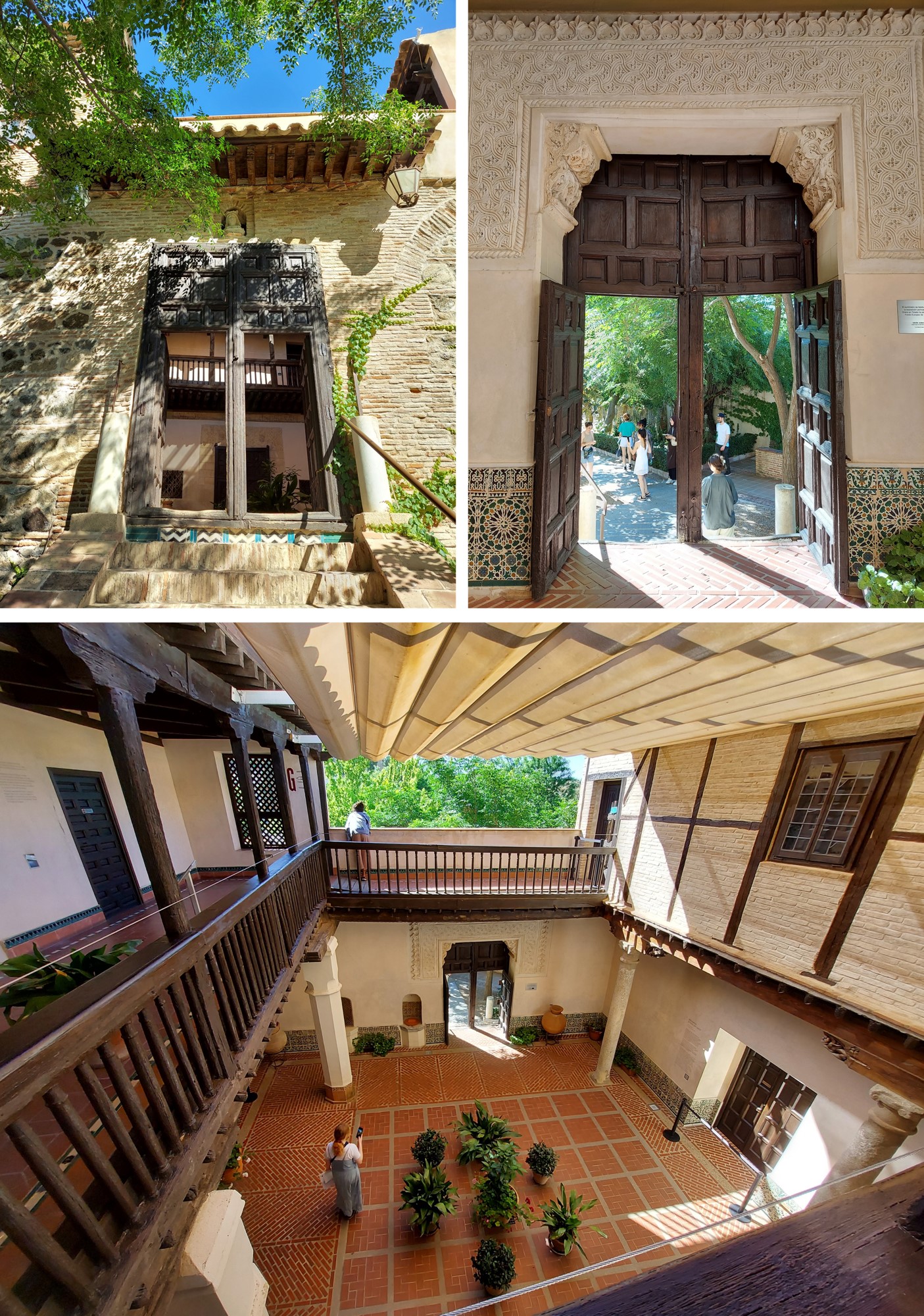
The intention of the Marquis de la Vega Inclán was to rehabilitate the house in ruins and recreate its domestic environments to show it as the real home of “El Greco”; where his life and personality are recreated.
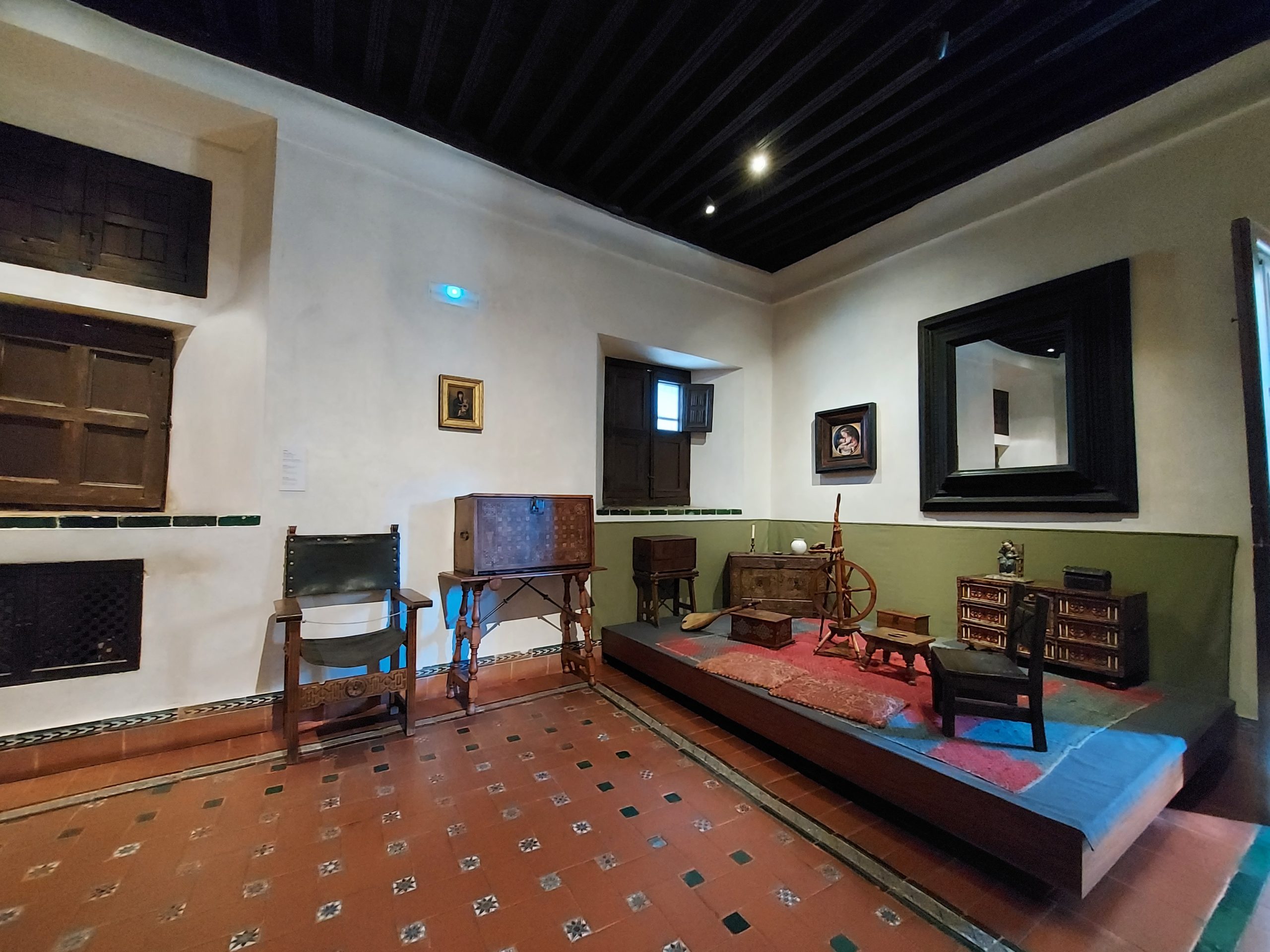
This manner of exhibition was a first in Spain and the success achieved by the ideal recreation of some environments or spaces, such as the kitchen and the study of “El Greco”, generated numerous visits of illustrious personalities, in addition to other museums imitated this form of presentation. This is the origin of what is known as “Spanish style” in interior decoration.
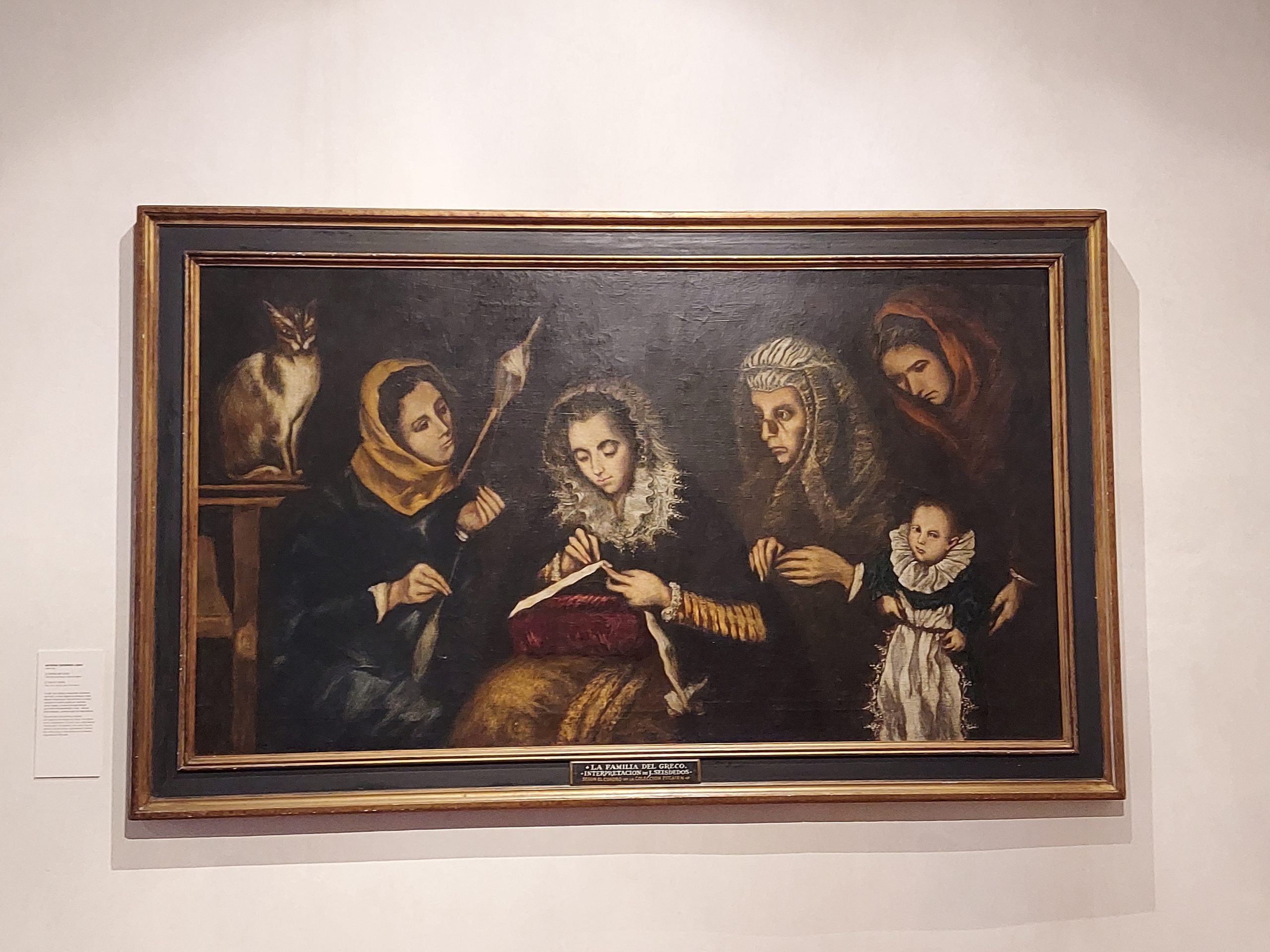
One of the more intimate paintings showing the “El Greco’s” family is the above, painted by his son Jorge Manuel. This portrait suggests that the scene took place in an exclusively feminine space located in the most intimate area of the house. The image shows the lady, along with the women around her, as they went about their work. Although, beyond a family portrait, the painting shows us certain details that represent the image of the perfect married woman, as it was manifested at that time.
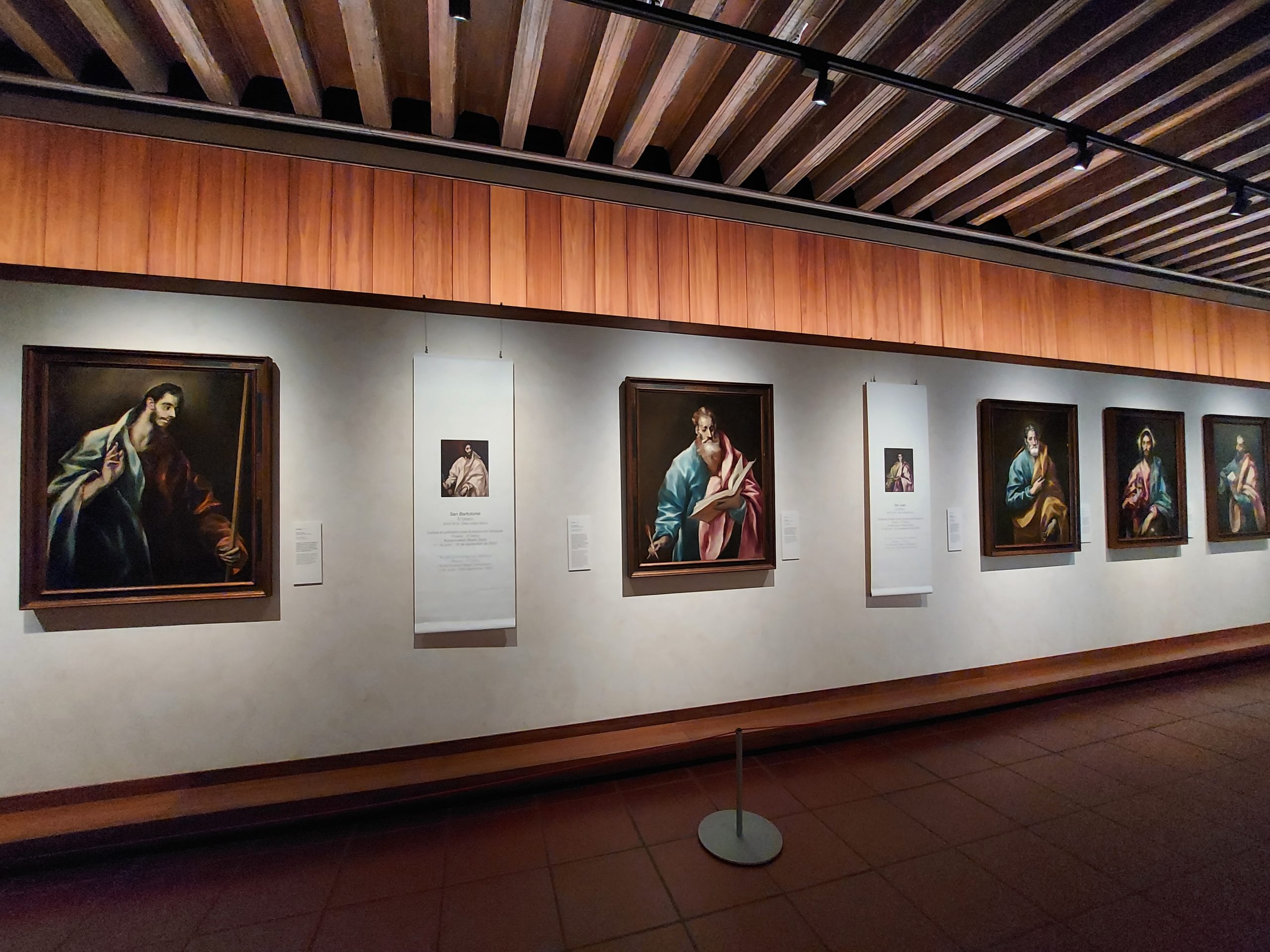
Through the different rooms of the “El Greco” Museum, it is reaffirmed what many researchers consider about the style of “El Greco”, after having been forgotten after his death and rediscovered in the twentieth century. El Greco painted according to the theoretical postulates, where natural beauty was shown by elongating the forms and the human figures were shown dynamic. These characteristics of his painting are shown through divine beings that practically vanish and an illumination that seems supernatural.
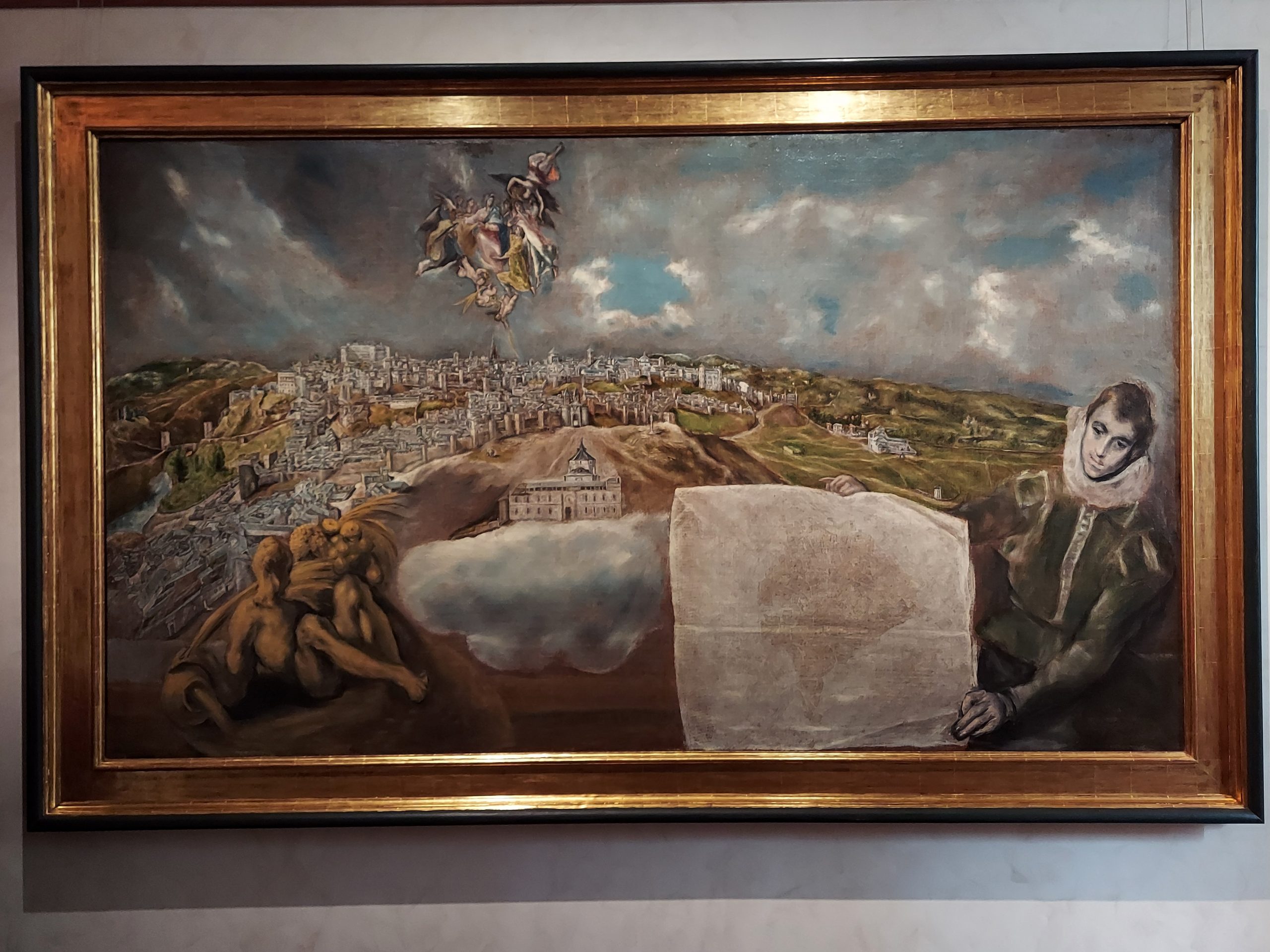
One of the works of “El Greco” that acquired a great importance, for not having such a representation in Spain until that moment, is “Vista y plano de Toledo” (View and Plan of Toledo). It is an oil on canvas that was painted by “El Greco” between 1610 and 1614. With this work, the artist contributes to the new image of the city of Toledo, showing the Tavera Hospital, the “Primada” Cathedral and the Monastery of “San Juan de los Reyes”.
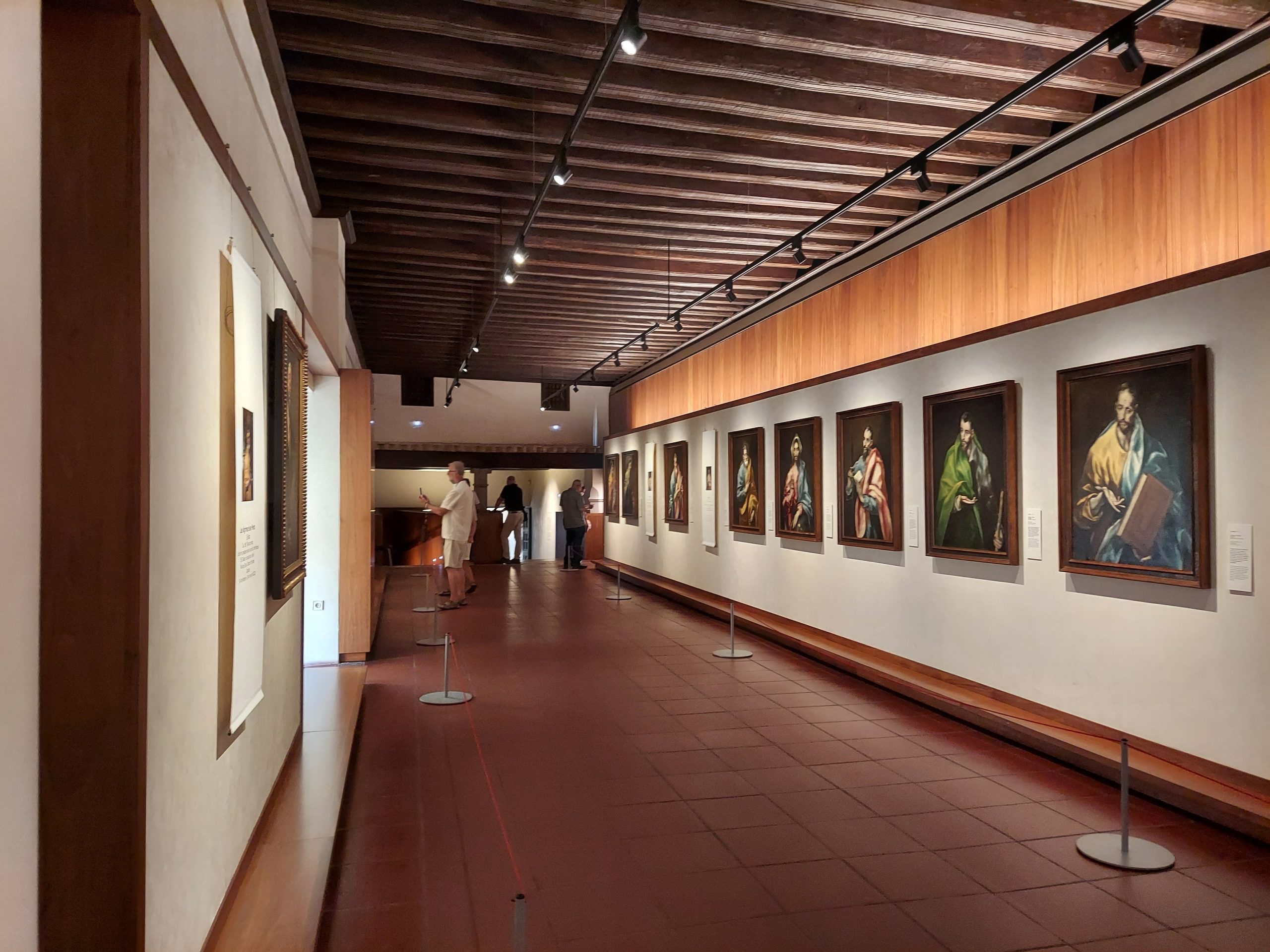
The initiative to create this museum was to vindicate the artistic importance of El Greco and to try to gather as many of his works as possible. Until then, many had been destroyed or damaged because of the little appreciation they received, and others were beginning to be exported due to the demand by foreign museums and collectors.
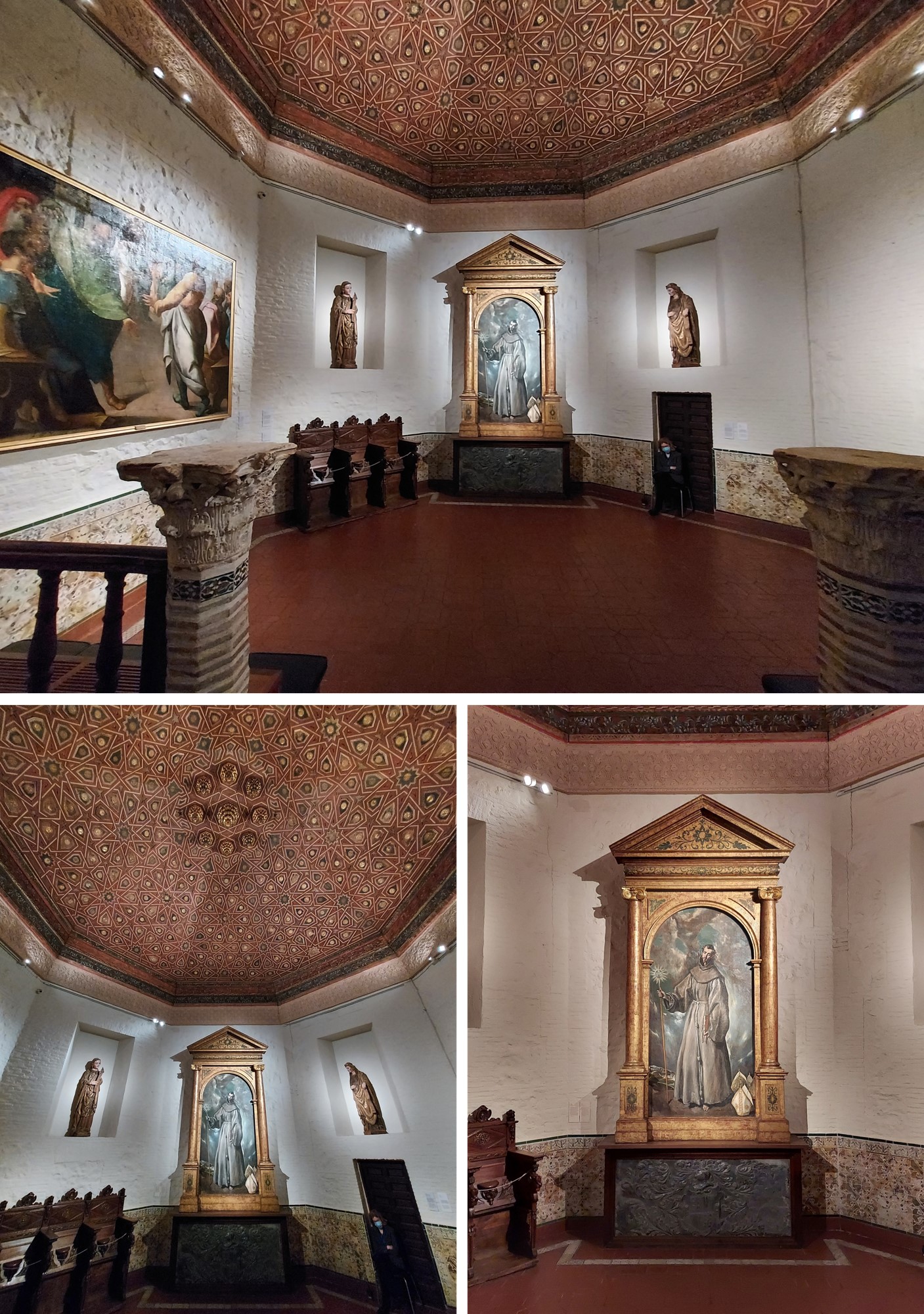
The work of “San Bernardino de Siena”, dating to 1603, is one of the most significant examples of “El Greco’s” final production. It is characterized by a greater elongation of the figures and by a very low horizon line. The colors used in the work were applied with great precision over the reddish preparatory layer. Saint Bernardine of Siena (1380-1444) was an outstanding member of the Franciscan order and a great preacher.
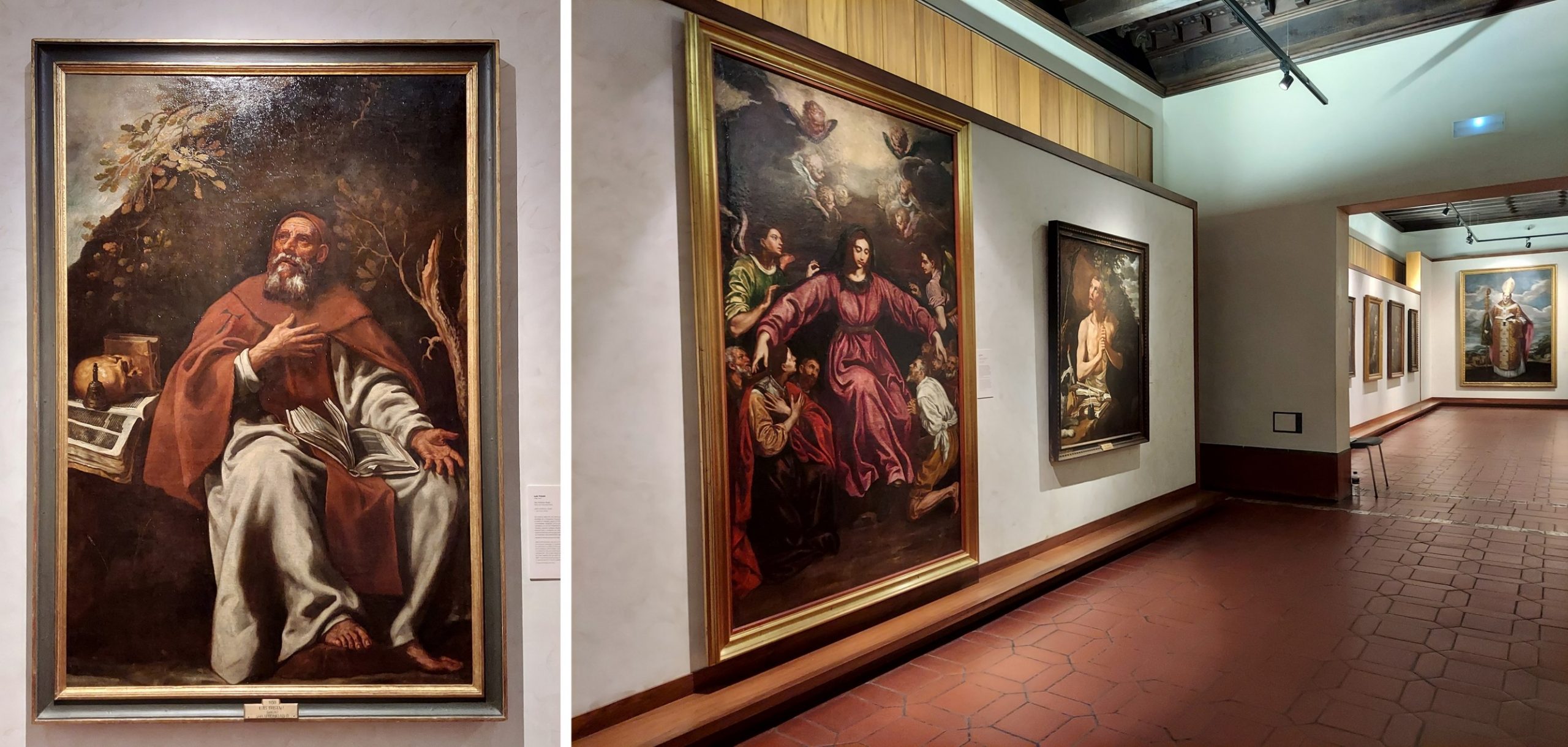
The museum also has a good number of works by Luis Tristán, considered the best disciple of El Greco who assimilated his style, although his painting shows influences of other artists he met in Toledo, Madrid and, above all, in Rome. He developed in Toledo a painting of religious themes following the compositions of El Greco and the elongated stylization of the figures. His artistic activity barely lasted ten years, which explains the uniformity of his style.
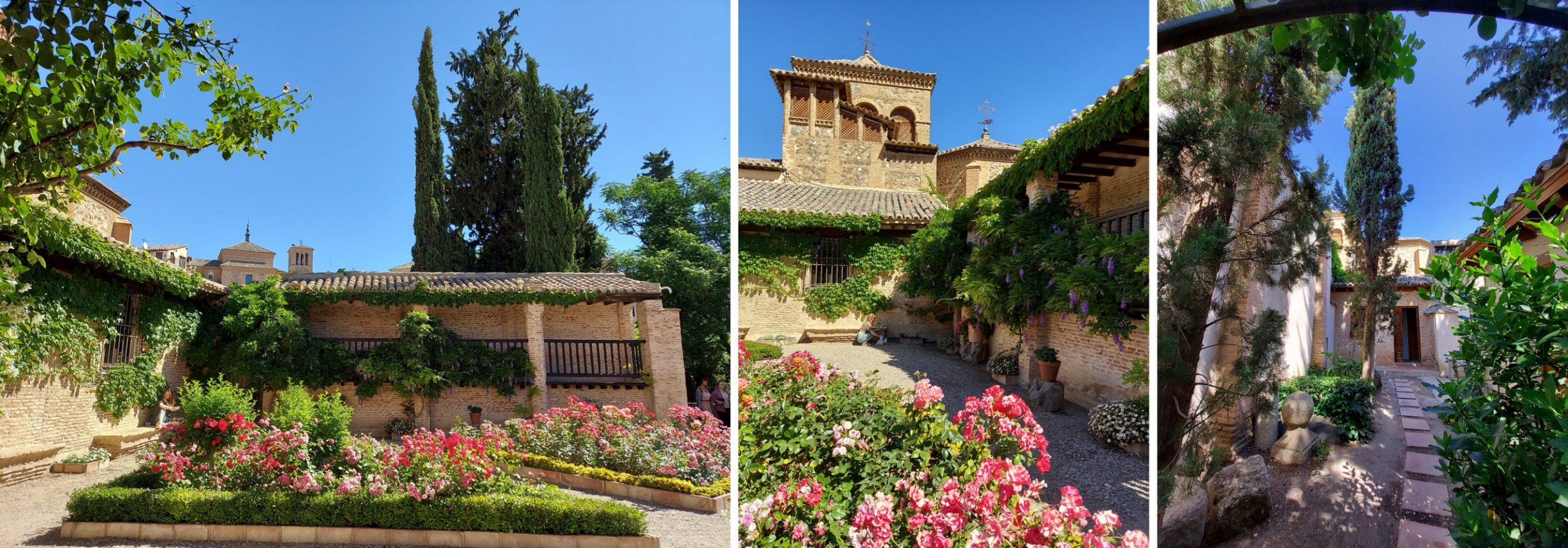
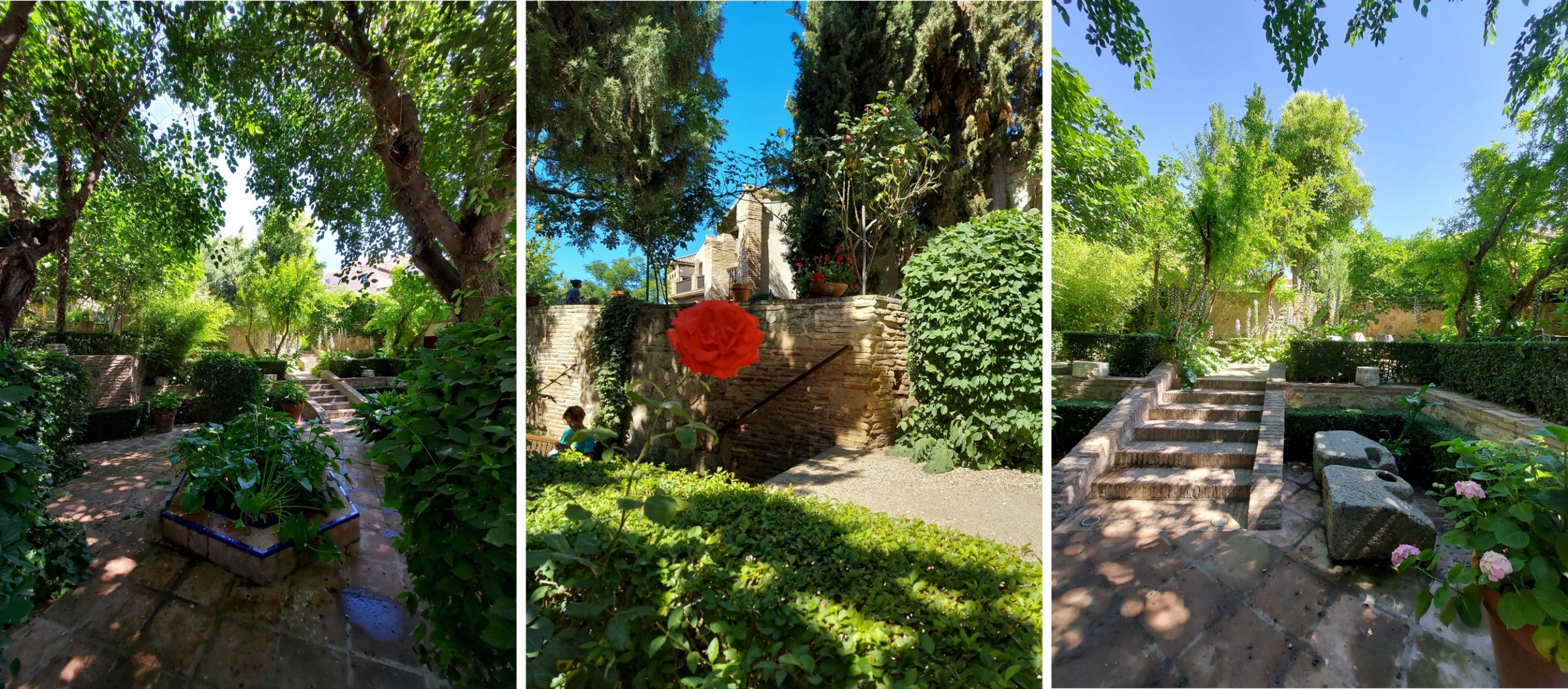
And we come to the beautiful gardens of the Museo del Greco, created as a place of inspiration, rest and meditation. It is almost like a place of retreat, to get away from the daily hustle and bustle.
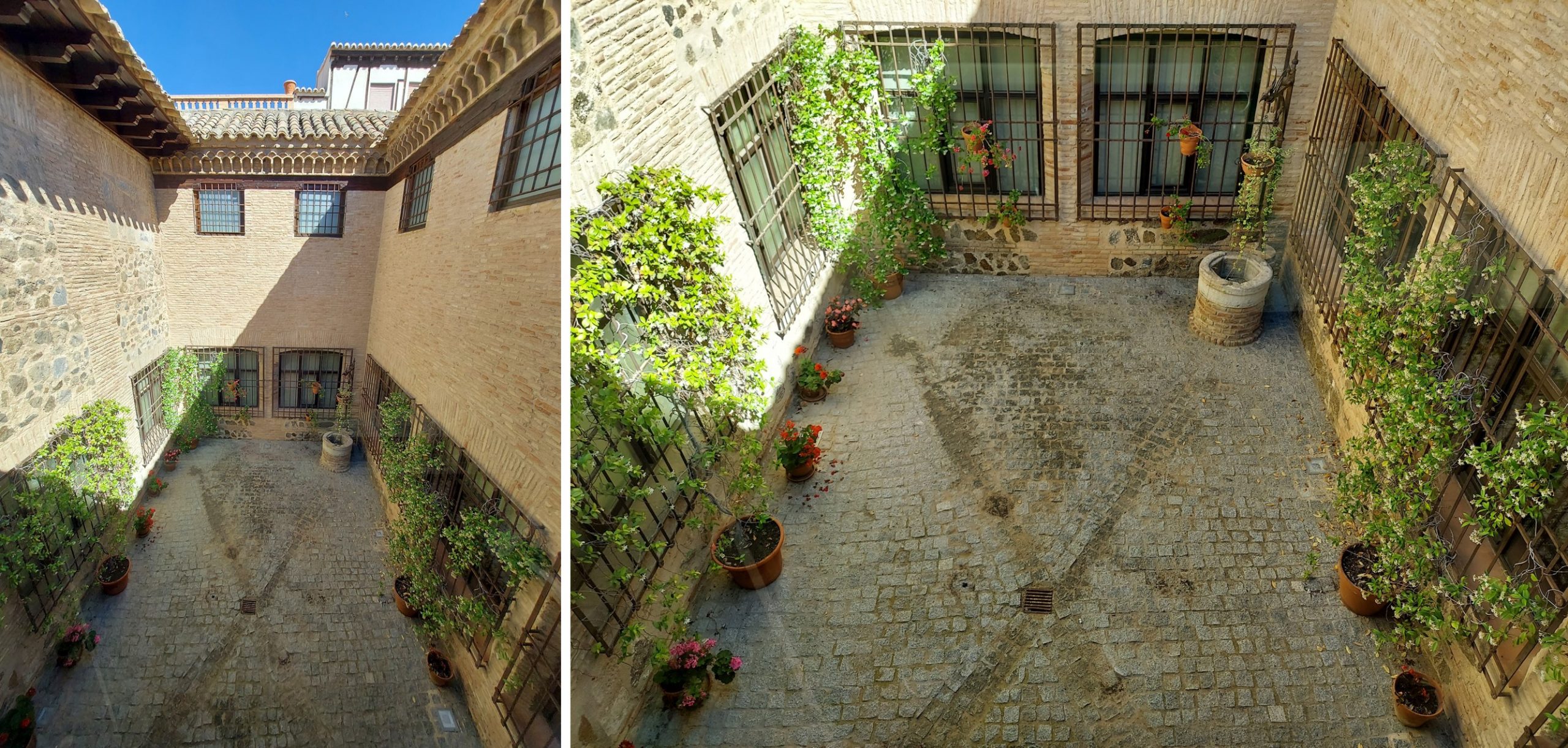
The El Greco Museum is closed on Mondays and also on the following dates: January 1 and 6, May 1, December 24, 25 and 31 as well as local holidays. Visiting hours are:
March 1 to October 31: 9:30 a.m. to 7:30 p.m. from Tuesday to Saturday.
November 1 to February 28: 9:30 a.m. to 6:00 p.m. from Tuesday to Saturday.
Sundays and holidays all year round: 10:00 a.m. to 3:00 p.m.
Resources:
https://www.culturaydeporte.gob.es/mgreco/museo/mision.html
https://es.wikipedia.org/wiki/Museo_del_Greco
http://www.turismocastillalamancha.es/patrimonio/museo-de-el-greco-2361/descripcion/
